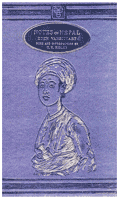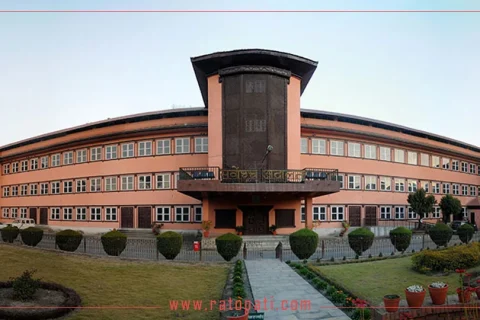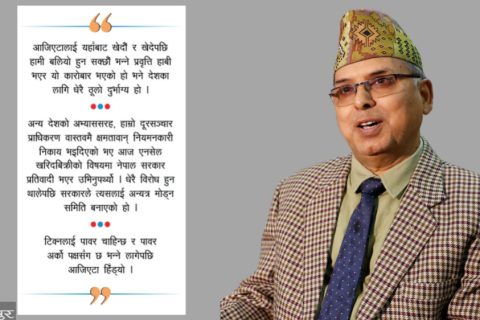
The book of Eden Vansittart, Notes on Nepal [Calcutta: 1896] was published about 110 years after the publication of Giuseppe de Rovato’s account of the conquest of Nepal Valley by Gorkha King Prithvi Narayan Shah. Vansittart was the captain of the 2/5th Gurkha Rifles and had the opportunity to know Nepal and the Nepalese in the perspective of the Gurkhas as well.
By the time the Notes on Nepal was written, several literatures on the hidden country of Nepal had already been published – the most significant, in terms of coverage and comparatively more thoroughness, being the researches of British Resident Brian Hodgson. Vansittart had been much benefited by the perspective of all these early authors. At the time this book was written, Prime Minister Jung Bahadur Rana, the founder of Rana regime, was already dead. Prime Minister Bir Shamsher was running the show after the assassination of Ranodip Singh in 1885 who had succeeded Jung Bahadur upon his death.
Eden Vansittart covers a wide range of topics in the Notes on Nepal in fifteen sections that the book has been divided into, giving treatment to a host of diverse issues. The book has been introduced by H. H. Risley, an official of the British Indian civil service at that time. Starting from general descriptions of Nepal and its geography, Vansittart describes the major zones of the country, river basins, population, crops and minerals, and international trade. Both the history of Nepal Valley up to conquest by King Prithvi Narayan Sahi and the subsequent development have been described briefly in the book. The author introduces King Prithvi Narayan as “a person of insatiable ambition, sound judgement, great courage, and unceasing activity” and his Gurkha principality as inhabited entirely by Magars, Gurungs, Thakurs and Khas “with a sprinkling of the menial classes.”
While Eden Vansittart describes the four- year Gorkha conquest with a broad outline (from the first seize of Kirtipur in 1765 till the fall of Bhatgaon in the commencement of 1769), he admits to being “quite ignorant of the details connected with the several sieges and engagements,” and the number of troops engaged either on the Nepal Valley or the Gurkha side during these four years. He deals with the conquests that continued even after the death of Prithvi Narayan Sahi. Vansittart mentions “the most heroic bravery [of the men of Kirtipur] in the defence of their capital.” He describes King Gainprejas [Jaypakash Malla] as high spirited and heroic. It is no doubt that he is influenced by Giuseppe de Rovato’s Account of the Kingdom of Nepal in setting his tone. He mentions the gallantry of the King of Tanahung, a Chaubise principality, without giving his name.
Vansittart states that the population of Nepal is estimated by the Nepalese at around 52,00,000 to 56,00,000. However, he says most writers, whom he presumes are correct, estimate it to be about 40,000,00. Until this time, 1896, it appears Nepalese hills had not started importing salt from India. As Vansittart writes, “the salt is packed in bags forming loads of about 15 Lb each which are brought across the snows fastened to the backs of sheep.”
Captain Vansittart also describes Nepal army as he saw it. He notes that the country has a standing force of 30,000 soldiers. There are soldiers on leave of almost the same numbers, who “enter the ranks and take the place of others who in turn lie by for a year or two.” All regiments are armed with locally manufactured Martini-Henrys or snider or muzzle loading percussion cap Enfield rifles. As regards to their efficiency, he says “there is no doubt that the material is good, and for defensive purposes in their own hills and forest, the soldiers would fight well and be formidable foes.” The weak point in Nepal army is “the officers, who are generally either very old men long past their work, or very young lads.” Notwithstanding this comment, Vansittart also describes the Jung Bahadur- led force which quells the Mutiny in Awadh and the performance of the Nepal army led by Dhir Shamsher in the War with Tibet in 1854. Referring to a parade held in Kathmandu on 6th March 1888, he observes that “108 guns marched past the Prime Minister, and it is therefore only natural to conclude that the Nepalese are strong in this branch.” This certainly indicates that the Army was still a powerful one by the prevailing standards.
Vansittart has separately dealt with the Aboriginal tribes of Nepal, which follows a section on the military tribes. The first group comprises of the Magars, Gurungs, Newar, Sunuwars, Khambus, Yakkas, Yakthumbas, Murmis (Tamangs/Lamas) and Lepchas. He quotes Brian Hodgson in saying that the “transit from the north into Nepal was constantly made before the Thibetans had adopted … the religion and literature of Buddhism.” When he deals with the military tribes, the Khasas come as the first group to be followed by Magar, Gurungs and Thakur. He does not include ‘Thakurs’ in the group of Khasas. Also added are the Limbus, Rais and Sunuwars. Here Vansittart cautions: “the prejudice which existed against them would seem rightly to be dying out rapidly. Nagarkotis and Murmis have also been discussed in the book as military tribes.
About early immigration in Nepal, Vansittart notes: “The most ancient records would seem to prove that Nepal was originally inhabited by Mongolians probably from one of the great waves of Mongolian conquest which spread through the breath of Asia from east to west, some side wave washed over the bleak snows of the mighty Himalayas, into the fertile plains and valleys of Nepal. Finding here a cool and bracing climate and a fertile soil, this mass of Mongolians settled down and adopted the country as their own.” Similarly, he talks about historical evidence of the existence in Nepal, long prior to the advent of Sakia Simha of Hindus from the plains from India, “Daughter of [King] Ashok being married to the descendent of a Chettri, who had settled there centuries before.” Vansittrat does not seem to be aware of the Khas people and their pre-Vedic existence – who migrated to the country via the western Thibet and adjoining territories – rather than India he was quick to link them with. It is clear that he has the influence of many earlier writings, which described Khas people according to the story given to them by the ruling elites at that time.
The book is certainly a valuable reading. It covers a wide range of descriptions on Nepal. It is good to study this book along with some other writings of Vansittart to get a complete understanding of his perspective on Gurkhas and their country. Judged by the time it was written, it definitely was an informative work.









